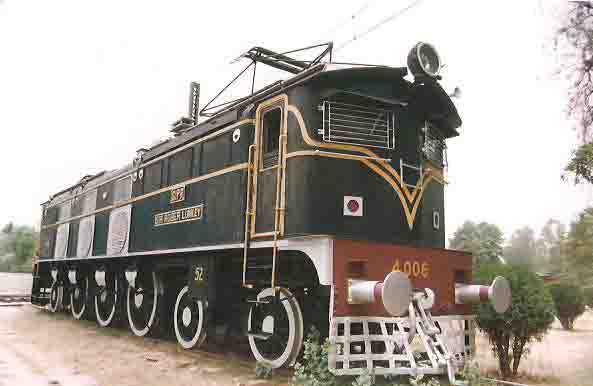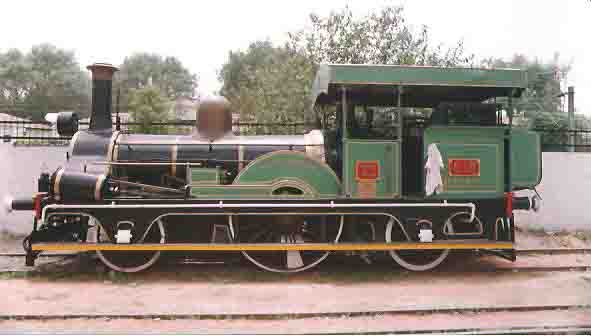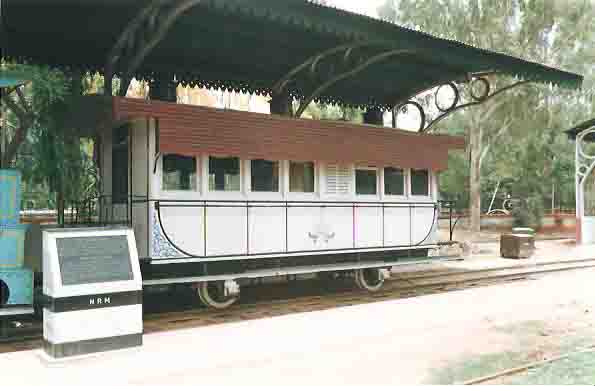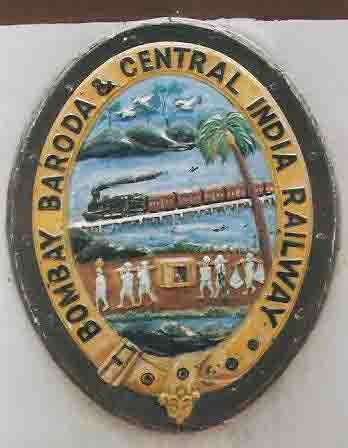| The Statesman |
|
| The Telegraph |
|
| Hindustan Times |
|
| Others |
|
| External Pages |
|
| |
| |
|
JEWELS OF TIME - Delhi National Rail Museum...
The museum that houses most priced locomotives of India also has in display the tiny two feet narrow gauge locomotive of Darjeeling Himalayan Railway writes, Rangan Datta

“The stations and locomotive sheds became our temples, the locomotives the god we worshiped and our tributes were not measures in gold and silver, but in the profits of Kodak and Agfa.”
The following lines are written by a railway enthusiast about the Indian Railway ~ It is often said that India is a country but Indian Railway is no less contrasting From the super fast Satabdi Express to the super slow trains of Mettupallayam- Ootacamund line, from the vintage steam engines of Darjeeling Mountain railways to the state of art technology of the Konkan Railway, from the luxurious coaches of the Palace on wheels to the crampe coaches of the Bombay’s intra city railways, India has it all. It is true that Indian Railway is as diversified as the country itself.
Experiencing India by traveling in rail is an altogether expensive affair, both in terms of money and time, but there is a way out. There is a short cut of experiencing the history and evolution of Indian Railway and get a real feel of the vintage pieces of the Indian Railway. The Indian railway museum at Chanakyapuri, New Delhi has this short cut.
As one enters the museum he is greeted by locomotives, coaches, wagons of all shapes and sizes. In fact  the museum is a unique example of diversity; here one can find the huge 234 –ton Beyer Garratt locomotive standing beside the tiny two feet narrow gauge locomotive of Darjeeling Himalayan Railway or the luxurious saloons of different native maharajas standing beside the third class coaches. the museum is a unique example of diversity; here one can find the huge 234 –ton Beyer Garratt locomotive standing beside the tiny two feet narrow gauge locomotive of Darjeeling Himalayan Railway or the luxurious saloons of different native maharajas standing beside the third class coaches.
The museum contains some of the most prized locomotives of India. The star attraction of the museum is the tiny engine of Fairy Queen. This 1855 made steam engine still
operates and is the oldest surviving railway engine in the entire world. Once every month during the tourist season the Fairy Queen make its journey out of the museum to make its schedule journey. Another attraction of the museum is 1909 built monorail belonging to the Maharaja of Patiala. This odd shaped train (there is an engine and a coach) as the name suggests runs on only one rail. The one and only one rail runs through the centre of the train containing a set of wheels while an oversized wheel jutting out on the right maintains the balance. The most incredible thing about this train is that it still runs every Sunday making a trip around the museum.
Among the other engines were  two huge Swiss built electric locomotives; which were in fact the first electric locomotives of India. It also contains huge 234 ton locomotive; which is one of the largest in the world. Another star of the museum is the yellow coloured fireless engine. It is an example of environmental friendliness. The mechanism of the engine is also explained in brief but it was tough for me to digest. Sadly the technology didn’t click and it was used for a short period for shunting purpose only. Apart from this the museum also houses a rare collection of narrow gauge locomotives, and a host of other engines of different sizes. two huge Swiss built electric locomotives; which were in fact the first electric locomotives of India. It also contains huge 234 ton locomotive; which is one of the largest in the world. Another star of the museum is the yellow coloured fireless engine. It is an example of environmental friendliness. The mechanism of the engine is also explained in brief but it was tough for me to digest. Sadly the technology didn’t click and it was used for a short period for shunting purpose only. Apart from this the museum also houses a rare collection of narrow gauge locomotives, and a host of other engines of different sizes.
Among the coaches the most remarkable is the saloon built for the Prince of Wales (Emperor Edward VII), this milk white saloon comes with a red sun shed and is provided with seats of armed guards on the four outside corners. The inside is highly decorated with all sorts of luxury items but sadly visitors are not allowed inside the saloon. Another attraction is the highly decorated saloon of Maharaja of Baroda, the entire ceiling of this green coloured saloon is decorated with gold and ivory, again we were not allowed inside this mobile palace of luxury. There were numerous other saloons belonging to the other local maharajas. Apart from the saloons the museum also houses some of the most remarkable coaches including an armored car used for transporting soilders to different war zones and a sheep car used for transporting sheep and goats.
The museum also houses a number of other railway accessories like rail car ( a car shaped vechile running on rails), railway cranes , small railway engines used by the railways. In the centre of the museum lies a gallery containing models, pictures and various facts about the Indian railway. There are model of Fairy Queen and the monorail, which were supposed to run, but during my visit none of these were running. It was the same case for every model on display. The museum houses the different logos used by the private railways of the maharajas, it also contains the logos of the different engine makers starting from Switzerland to Canada and from England to Japan. There are rare facts and pictures about Indian railways. The most interesting item of the gallery is the skull of an elephant killed in a collision with a train.
Sadly the most crowd puller in the museum has nothing to do with history. It is a model of a vintage train (although it has little similarity with the vintage beauties all round him) which goes round the museum. It runs everyday and provides a joy ride for people, who have little interest in history. However, this joy ride provides the museum with valuable revenue for running the museum.
As I walked out of the museum I turned around to have a last look at the vintage pieces and to recall on my journey that took me straight into the pages of history. |
 Back to top Back to top |
Original Link |
|

